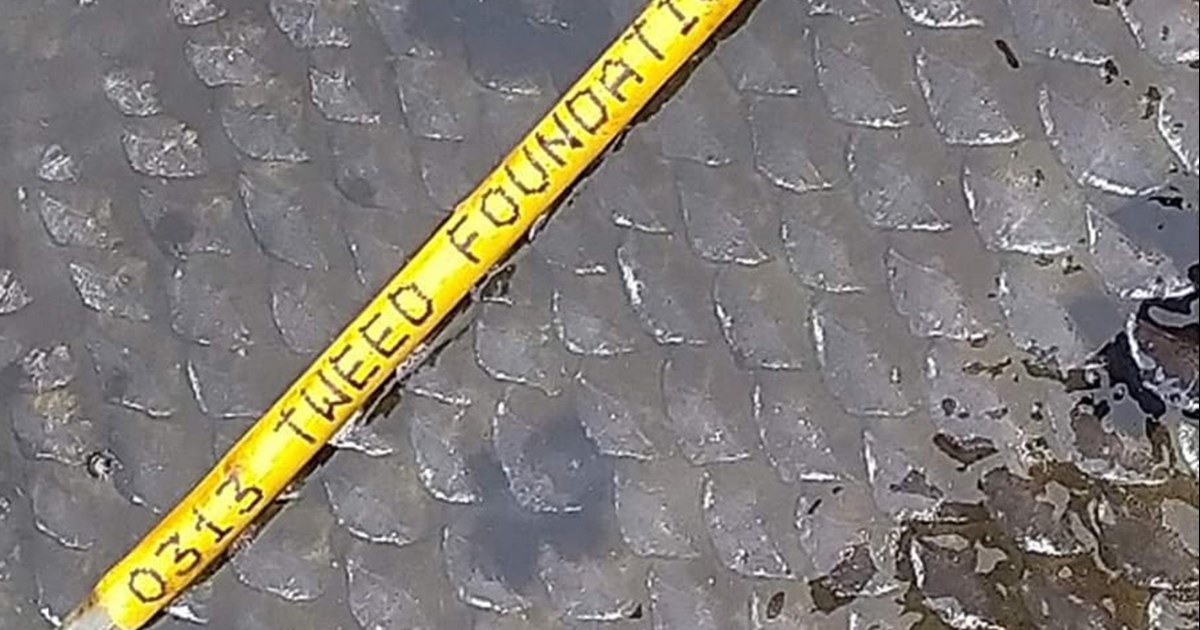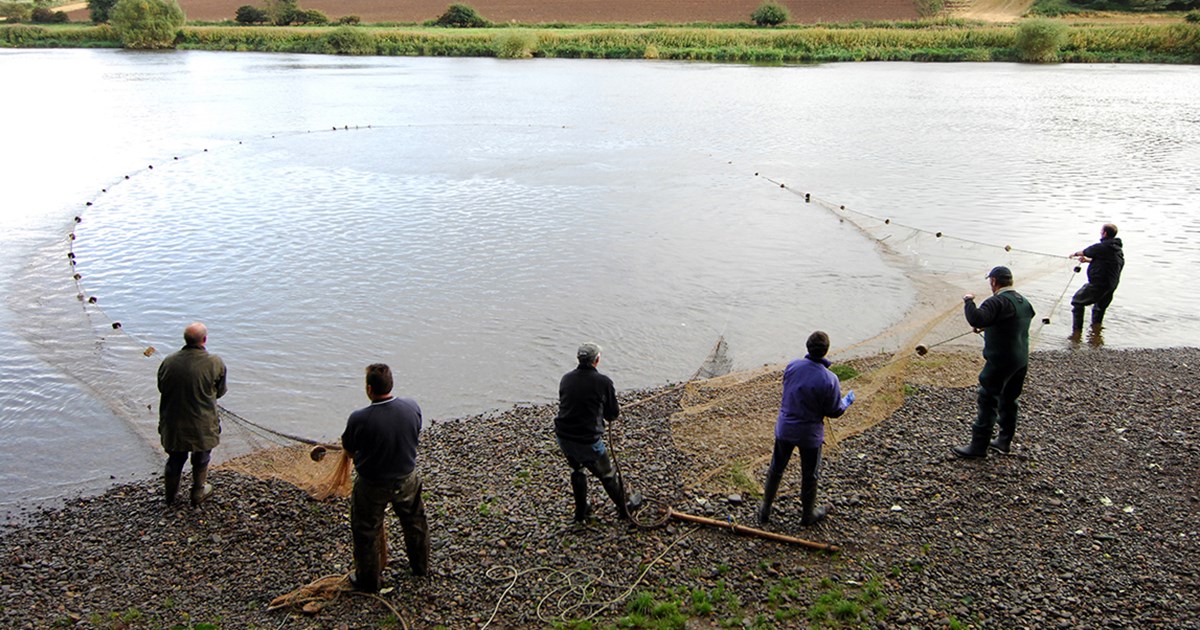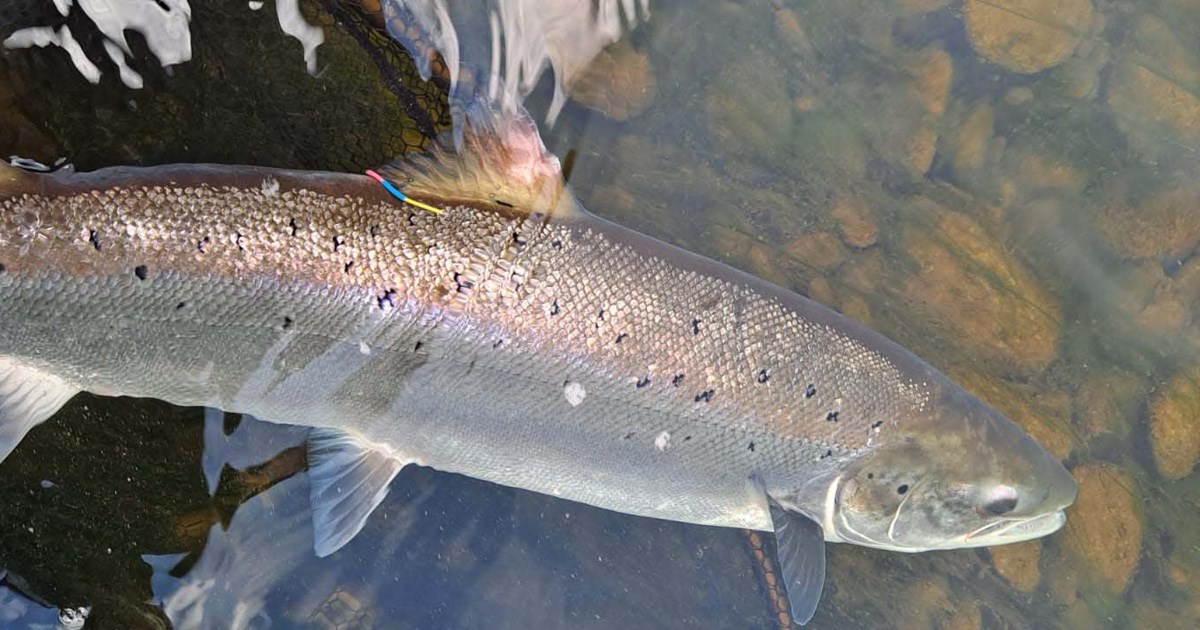Adult Tagging
To get an idea of the numbers of Salmon and Sea Trout returning to the river based on the number of fish being caught, we need to understand the exploitation rates of each run of fish: what proportion are being caught by anglers and are fish being caught just once or multiple times? The Tweed Foundation have been tagging adult Salmon and Sea Trout in the Lower and Middle Tweed to help answer these questions.
Floy Tagging
We have been tagging adult Salmon and Sea Trout with floy tags. Floy tags are long, narrow external tags that are inserted just underneath the dorsal fin of each fish. Each tag is brightly coloured and contains a unique code, allowing any tagged fish to be easily noticed and identified if and when it is caught upstream by an angler.


Capture Rates
We started floy tagging adult Salmon and Sea Trout in 1997, tagging fish caught at one of two netting stations in the Lower Tweed. The fish are caught in the nets and then quickly tagged before being released back into the river. We can then monitor how many of these tagged Salmon and Sea trout get caught upstream by anglers.
By monitoring the capture rates of these tagged fish, we can estimate the total number of fish of different stocks that run the river and assess the potential effects of different catch and release policies in place.
Recapture Rates
Since 2019, we have also been working alongside boatmen to floy tag rod caught fish on beats in the Lower and Middle River. Once fish are caught, boatmen (who are trained in the tagging) quickly tag the fish before releasing them back into the river. Any angler that catches a tagged fish upstream then reports the fish and tag number to us. Using this information we can monitor the recapture rates of Salmon and Sea Trout (how often individual fish are being caught by rod) in the Tweed system. Each beat also has its own colour of floy tag, meaning that we can monitor where they have been tagged and where they are recaptured, providing further insight into the movements of fish once they are in the river system - some have even been spotted swimming through our fish counters!

Understanding the exploitation rates of the different runs of Salmon and Sea Trout throughout the year is important for the management of the Tweed as a fishery. If the proportion of tagged fish that are recaptured is high, then this tells a very different story compared to if the proportion is low, affecting how fishing should be regulated on the river throughout the year.